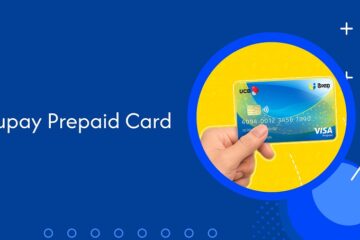TymeBank, one of South Africa’s fastest-growing digital banks, has redefined banking for millions by providing affordable, accessible, and customer-centric digital financial services. Launched in 2019, TymeBank’s mission centers on financial inclusion, offering services to historically underserved populations who may lack access to traditional banking infrastructure. As a fully digital bank, TymeBank operates without physical branches, relying on digital platforms and a network of retail partners to onboard customers and deliver banking services.
This case study explores how TymeBank’s inclusive digital banking model has impacted its customers, particularly in terms of accessibility, affordability, and customer experience. We will also look at the broader implications of inclusive digital banking for financial inclusion in developing markets.
Digital Bank Context
The current high-tech financial services landscape, often dominated by fintech startups and tech giants. But, the role of banks in advancing financial inclusion remain important like never before. The high cost of running brick-and-mortar branch networks has traditionally inhibited banks from serving the low-income groups. Furthermore, banks have also been slow to adapt the digital innovations that are essential to reach these segments at lower cost.
However, banks can play significant role in financial inclusion by overcoming the challenges of their legacy systems and processes. Also, unlike other types of financial services providers (FSPs), bank have advantages that may allow them to have an outsized impact on financial inclusion. The biggest benefit of bank is that they do not face the same regulatory constraints as other providers like MFS, PSP, PSO etc. For example, mobile money providers and fintechs generally cannot provide a wide array of financial products (ranging from savings to credit). Whereas, banks can fund their lending portfolios with retail deposits, which may reduce the cost of reaching low-income customers with credit.
The most talked three emerging business models namely, fully digital retail banks, marketplace banks, and Banking-as-a-Service (BaaS) have the potential to deepen financial inclusion lowering the cost of financial services, improving access to a greater variety of services, creating services that better meet the needs of various customer segments and improving the customer experience.
A. Overview of TymeBank’s Business Model
TymeBank operates as a branchless, digital-only bank, using technology to reach customers who would otherwise struggle to access traditional banking services. The bank is backed by South African retail giant Pick n Pay and operates a network of over 700 kiosks in partner retail stores, allowing customers to sign up for accounts in a matter of minutes. TymeBank’s entire service offering—from opening an account to making deposits and managing finances—is managed via mobile app, online banking, and retail partnerships.
Key features of TymeBank’s business model include:
- Zero or low fees: TymeBank offers many services with no monthly fees and minimal transaction charges, making it affordable for low-income individuals.
- Instant onboarding: Customers can open an account and receive a debit card in less than 5 minutes at in-store kiosks, bypassing the need for long paperwork or traditional bank visits.
- Financial literacy tools: TymeBank provides GoalSave, an innovative savings tool that incentivizes savings with higher interest rates and educates users on effective money management.
- Incentive Programs: TymeBank offers incentive programs that appeal to target segments (e.g., the SmartShopper loyalty program).
The value propositions TymeBank are also important to respond to three frequently cited barriers to financial inclusion: (i) expensive services, (ii) limited access points, and (iii) prohibitive know-your-customer (KYC) requirements.
B. The Customer Impact of Inclusive Digital Banking
TymeBank’s digital-first, inclusive approach has had a profound impact on customers, particularly in expanding access to financial services for those who were previously excluded from traditional banking.
Expanding Access to Financial Services
One of TymeBank’s most significant contributions to the South African financial sector is its ability to provide accessible banking services to underserved populations. Many South Africans, particularly in rural areas, struggle to access traditional banks due to high fees, complex documentation requirements, and limited physical branches.
- Impact on the Unbanked: According to estimates, as of 2023, over 4.5 million South Africans have opened accounts with TymeBank. A large portion of these customers were previously unbanked or underbanked, meaning they had little to no access to financial services.
- Rural Penetration: TymeBank’s retail partnerships allow it to reach customers in rural and underserved areas where traditional banks have no branches. The presence of kiosks in major supermarket chains ensures that banking services are integrated into customers’ daily lives, making it easier for them to deposit money, withdraw cash, or check balances while shopping.
Affordability and Fee Structure
TymeBank’s no-fee banking model has been a game-changer for many South Africans who were previously excluded from banking due to high costs. Traditional banks in South Africa often charge significant fees for maintaining accounts, ATM withdrawals, and other basic services, which can be prohibitive for low-income individuals.
- Zero Monthly Fees: TymeBank charges no monthly fees for maintaining a bank account, making it an affordable option for people with low or irregular incomes. This feature has made it accessible to the informal economy, where many individuals earn wages outside of formal employment.
- Low Transaction Costs: TymeBank also offers low-cost transaction fees, allowing customers to send and receive money without worrying about high charges. This affordability is critical for individuals who rely on small, frequent transactions for day-to-day living.
Financial Literacy and Savings Incentives
TymeBank has gone beyond offering basic banking services by introducing GoalSave, an innovative savings tool that not only incentivizes saving but also educates customers on financial literacy. GoalSave allows customers to create savings goals and offers higher interest rates for longer-term savings commitments, encouraging financial discipline and planning.
- Customer Empowerment: Through GoalSave, customers can earn up to 8% interest on their savings, far higher than the rates offered by traditional banks. The tiered structure rewards users for leaving their savings untouched for longer periods, teaching them the value of saving for future needs.
- Impact on Savings Behavior: The introduction of GoalSave has positively impacted how customers approach savings, particularly among low-income earners. TymeBank reports that a large portion of its users have started using the savings feature to build an emergency fund or save for important life events such as education or home repairs.
Convenience and User Experience
TymeBank’s digital platform prioritizes ease of use and customer convenience, two factors critical to driving financial inclusion. The bank’s mobile app and web platform are designed to be simple and intuitive, ensuring that customers, even those unfamiliar with banking, can manage their accounts without difficulty.
- Instant Onboarding: One of TymeBank’s standout features is its ability to onboard customers in less than five minutes through its in-store kiosks. This instant account creation process reduces the friction often associated with traditional banks, where lengthy documentation and approval times are common.
- 24/7 Access to Banking Services: By using a mobile-first approach, TymeBank ensures that customers can access their accounts and manage transactions anytime, anywhere, as long as they have internet access. This 24/7 availability is particularly beneficial for informal workers or small business owners who may not have time to visit a bank during regular hours.
C. The Broader Impact of Inclusive Digital Banking
Beyond individual customer benefits, TymeBank’s approach to digital banking is having a broader impact on financial inclusion and economic empowerment in South Africa.
Empowering Women and Vulnerable Populations
TymeBank has been instrumental in empowering women, who are often disproportionately affected by financial exclusion. By offering affordable, accessible banking services, TymeBank provides women with the tools they need to manage their money, save for the future, and access credit.
- Case Study: Many women in rural areas have used TymeBank’s GoalSave feature to save money for their children’s education or household improvements, building financial resilience and independence.
Supporting Small Businesses and Entrepreneurs
TymeBank has also played a role in supporting small businesses and entrepreneurs, particularly those operating in the informal economy. By providing affordable banking services and digital tools, TymeBank helps small business owners manage their cash flow, save money, and access financial products that can help them grow.
- Merchant Payments: TymeBank has introduced low-cost merchant payment solutions that allow small business owners to accept digital payments without the need for expensive point-of-sale equipment.
Reducing the Informal Economy
In South Africa, a significant portion of the population operates within the informal economy, where transactions are largely conducted in cash. TymeBank’s digital banking model helps transition these individuals into the formal financial system, providing them with a bank account, savings tools, and access to credit.
- Impact on Financial Formalization: By bringing individuals into the formal banking system, TymeBank enables greater financial transparency and access to credit, which are critical for economic mobility.
D. Challenges and Opportunities
While TymeBank has made significant strides in promoting financial inclusion, there are still challenges and opportunities for further growth.
Challenges:
- Digital Literacy: Many of TymeBank’s target customers may have limited experience with digital banking, making digital literacy a key challenge. Educating customers on how to use the mobile app and kiosks effectively is essential for sustained success.
- Connectivity Issues: In rural areas, internet connectivity remains a barrier to accessing digital financial services. TymeBank must continue expanding offline options and partnerships to reach customers with limited access to digital tools.
Opportunities:
- Expanding Credit Offerings: While TymeBank has introduced savings tools, there is an opportunity to expand its range of microloans and credit products to help individuals and small businesses access capital.
- New Partnerships: By forming new partnerships with retail chains, telcos, and utility companies, TymeBank can further expand its reach and offer additional services such as micro-insurance or utility bill payments.
TymeBank has redefined inclusive digital banking in South Africa by providing affordable, accessible financial services to underserved populations. Its focus on financial inclusion, innovative savings tools like GoalSave, and low-cost banking solutions have made a tangible impact on its customers’ lives, particularly among the unbanked and underbanked.
By continuing to leverage technology and expand its service offerings, TymeBank has the potential to further drive financial inclusion, support small businesses, and empower vulnerable populations across South Africa, serving as a model for digital banking in other emerging markets.










